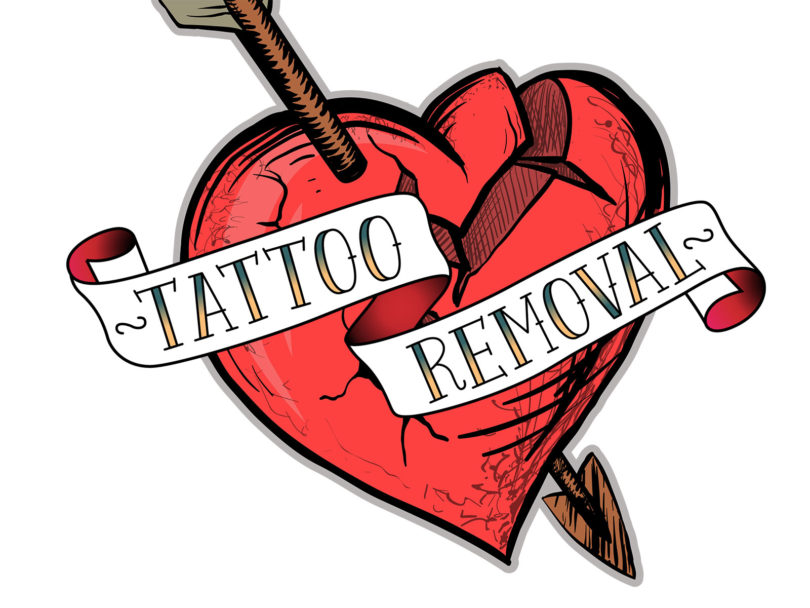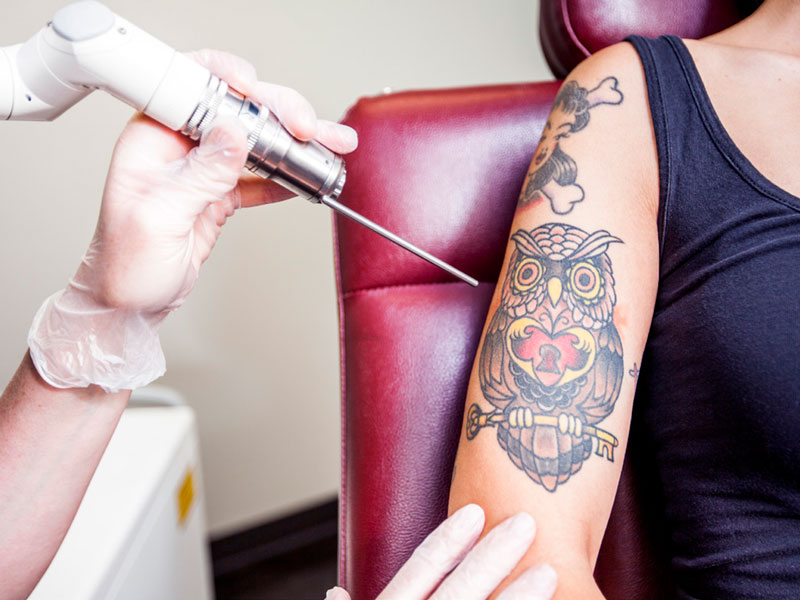Got ink? Recent Harris Polls indicate that three out of ten Americans are tattooed. Nearly half of millennials 18-29 have been under the needle at least once, and, the number of women with tattoos has surpassed the number of men. But with this market surge comes a predictable byproduct: buyer’s remorse. Nearly 23 percent of people surveyed claimed that, if they could turn back time, they would pass on the tattoo parlor.
Polling indicates that only 11 percent of those with an unwanted tattoo take action to have it removed, leaving a margin for growth and a good investment for cosmetic surgeons. Although most insurance plans won’t cover them, there are several removal options, including:
Excision: surgical extraction of affected skin, sometimes followed up with skin grafting. This is suggested for smaller tattoos
Dermabrasion: best for amateur tattoos that are not deeply embedded in the skin, a rotary instrument similar to a sander is used to remove affected skin
Laser treatment: controlled laser applications break up ink. Multiple treatments are usually needed, but there is minimal damage to surrounding skin when done properly
With less invasive techniques and less downtime, laser treatment is the most popular method. According to statistics collected by Astanza Laser, the current market for removal is decidedly lopsided in favor of women. Seven of ten removal clients are females in their late twenties, and the majority have black ink tattoos that are 4×4 inches or less.
Behind the Ink
One of the most compelling aspects of tattoo art is the story behind the ink. The same can be said of the removal process. Reasons for removal may include anything from breakups to career advances to lifestyle changes. Both Angelina Jolie and Johnny Depp had removals after failed romances. Rapper 50 Cent had tattoos removed to pursue an acting career. A unique story in the Tidewater area comes from pediatrician and sports doctor Steven Mares, who is the founder of Erase the Canvas Laser Tattoo Removal Clinic.
“I had a tattoo placed on my forearm so that I could go through the laser removal process,” Mares says. “I wanted to be able to photograph the results during the days following removal treatment in which there is swelling and redness, sometimes blistering, and drying and flaking of the area treated. I also wanted to experience exactly what my clients experience.”
In addition to undergoing the process himself, something that most technicians don’t experience, Mares completed a rigorous training course at the National Laser Institute in Phoenix.
Laser Tattoo Removal
The procedure uses light energy from the laser to break down the inert ink placed under the skin into smaller particles. The body then absorbs the particles from the skin through the lymph system. The lymph system is a sort of low-pressure vacuum that absorbs excess fluid and dumps it into the circulatory system. The ink is then removed by the liver. Removing all of the ink takes multiple treatments with changes in the energy settings and spot size of the laser beam.
Is the Process Painful?
The sensation is described as similar to being splattered with bacon grease. The pain has to do with the absorption of light energy by dark ink — especially black. It heats up and feels as though the skin is burning. Cooling machines and creams help with discomfort and protect the skin from excessive thermal injury.
There’s No Guarantee
With laser removal, size generally does not matter, but colors do. Black and red ink tend to respond the best. Blues, greens, light yellows and white are more difficult. In the future, tattoos may be even more difficult to remove using current technology because of an increase in custom color mixing. No matter the color, there is never a guarantee of total removal, but the process is very effective.
Have Realistic Expectations
A variety of laser systems are available to doctors, some of them costing as much as $150,000. Dr. Mares uses the RevLite SI Q-Switched Nd:YAG laser and SmartCool 6, which he claims is the most advanced system on the market. Even with state-ofthe-art technology, each tattoo removal is unique. Dr. Mares says, “the number of treatments average from five to fifteen sessions and depend on factors such as size, location, color, density of ink, scarring or tissue change and layering.”
As with all cosmetic procedures, The American Society of Aesthetic Plastic Surgeons advises that satisfaction is contingent on realistic expectations. In some instances, a ghost image of the tattoo may remain, as will any scarring incurred during the original tattoo application. Successful removal may take up to a year for some people. Depending on skin type and reaction to the laser, treatments may be spaced anywhere from one to three months apart.
While tattoos have undoubtedly made their way into mainstream American culture, careful consideration before application is still advisable. Removal fees can total up to ten times the cost of the original tattoo. Discretion beforehand may save a person hundreds or even thousands of dollars eliminating body art that has lost its luster.




